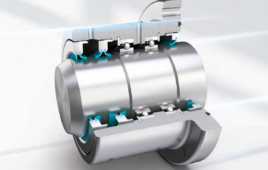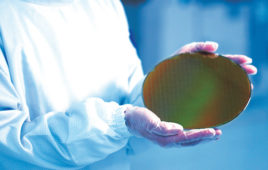Localized operating temperature has a big influence on the failure rate of microelectronic devices. Hot spots that arise from local power dissipation make for inefficient, costly ICs.
Because traditional techniques cool the entire IC, they require a bigger heatsink. Additionally, they often overcool the surrounding silicon. The advanced thin film embedded thermoelectric cooler (eTEC™) from Nextreme solves this problem. It cools hot spots on the IC locally.
“The eTEC pumps heat from one place to another in the same manner that a water pump moves water,” said Dr. Paul A. Magill, Nextreme Thermal Solutions VP Marketing and Business Development. “By pumping heat from low thermal conductivity materials – the die and thermal interface materials – to a high thermal conductivity material – a heat spreader, the eTEC cools hot spots on ICs.”

It operates by the Peltier effect: When an electric current is driven through a circuit containing two dissimilar materials, heat is absorbed at one junction – the cold side – and released at the other junction – the hot side.
The eTEC uses thin-film compound semiconductor materials that have high electrical conductivity and poor thermal conductivity to maximize current flow and minimize heat flowing back from the hot side to the cold side. The eTECs have small, thin, fast, efficient, and reliable thin films that add only 100µ of height to a heat spreader. This lets engineers integrate the devices close to the heat source. The eTEC has a millisecond response time for rapid cooling and heating to maintain a precise temperature. It pumps a maximum heat flux of 150 W/cm2 with some designs delivering as much as 400 W/cm2 versus less than 10 to 20 W/cm2 for typical bulk eTECs.
Nextreme Thermal Solutions, Inc.
www.nextreme.com
Filed Under: Semiconductor manufacture





Tell Us What You Think!